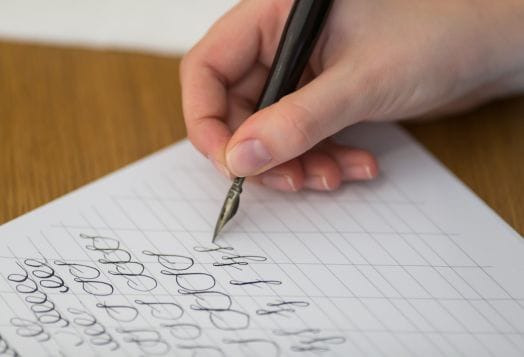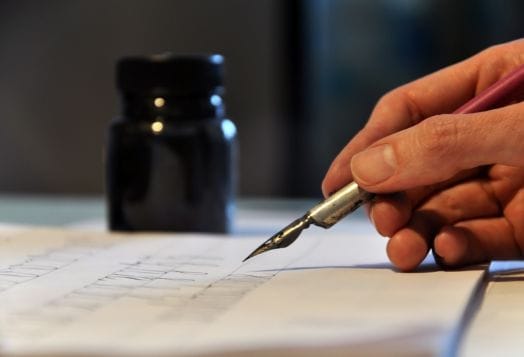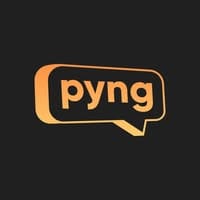Close your eyes and imagine a letter arriving in your mailbox. Not an email, not a notification, but a physical piece of paper where each letter seems to dance with intention, where ink flows like a river of emotion, telling a story beyond mere words.
This is the magic of calligraphy —an art that transforms communication from a mere transaction into an intimate experience.

Why Calligraphy is More Than Just Writing: The Art of Hand Lettering
Calligraphy is more than ink on paper. It's a meditative journey, a personal expression that goes beyond mere communication. In a world of digital fonts and rapid typing, calligraphy invites you to slow down, to connect intimately with each word you create.
When you practice calligraphy, you're not just writing—you're painting emotions. Every curve tells a story, every line carries a mood. The gentle sweep of a brush pen or the precise dance of a dip pen becomes an extension of your inner world.
The Roots of Calligraphy
This art form is a bridge between ancient traditions and modern expression. From the intricate Chinese scrolls to the passionate Arabic designs, calligraphy has always been more than just writing—it's been a sacred form of human communication.
In ancient cultures, calligraphers were revered as artists, philosophers, and storytellers. Their work wasn't just about recording information, but about capturing the essence of human experience.
The Deeper Meaning Behind Calligraphy: A Reflection of Your Soul
Every stroke of a calligraphy pen is a reflection of the human condition. It's a metaphorical journey that mirrors our inner landscapes—sometimes bold and decisive, sometimes delicate and hesitant, always uniquely personal.
Decoding Your Personality Through Strokes
Just as a person's walk reveals their personality, the way someone approaches calligraphy unveils their inner world:
Methodical individuals might gravitate towards Gothic scripts with precise, angular formations
Fluid, emotional souls might find solace in the sweeping, romantic curves of Copperplate or Italic styles
Your calligraphy becomes a visual fingerprint, revealing layers of your personality that words alone cannot express.
The Therapeutic Dimension of Calligraphy
Beyond its aesthetic appeal, calligraphy serves as a powerful therapeutic tool. In an age of increasing mental health challenges, this art form offers a unique form of emotional expression and healing.
The repetitive nature of practising strokes creates a meditative state, similar to journaling and mindfulness practices. As you focus on the gentle movement of your pen, anxious thoughts dissipate. The world narrows to the present moment—the paper, the ink, the breath.
Why Calligraphy is More Than Just Writing: The Art of Hand Lettering
Calligraphy is more than ink on paper. It's a meditative journey, a personal expression that goes beyond mere communication. In a world of digital fonts and rapid typing, calligraphy invites you to slow down, to connect intimately with each word you create.
When you practice calligraphy, you're not just writing—you're painting emotions. Every curve tells a story, every line carries a mood. The gentle sweep of a brush pen or the precise dance of a dip pen becomes an extension of your inner world.
The Roots of Calligraphy
This art form is a bridge between ancient traditions and modern expression. From the intricate Chinese scrolls to the passionate Arabic designs, calligraphy has always been more than just writing—it's been a sacred form of human communication.
In ancient cultures, calligraphers were revered as artists, philosophers, and storytellers. Their work wasn't just about recording information, but about capturing the essence of human experience.
The Deeper Meaning Behind Calligraphy: A Reflection of Your Soul
Every stroke of a calligraphy pen is a reflection of the human condition. It's a metaphorical journey that mirrors our inner landscapes—sometimes bold and decisive, sometimes delicate and hesitant, always uniquely personal.
Decoding Your Personality Through Strokes
Just as a person's walk reveals their personality, the way someone approaches calligraphy unveils their inner world:
Methodical individuals might gravitate towards Gothic scripts with precise, angular formations
Fluid, emotional souls might find solace in the sweeping, romantic curves of Copperplate or Italic styles
Your calligraphy becomes a visual fingerprint, revealing layers of your personality that words alone cannot express.
The Therapeutic Dimension of Calligraphy
Beyond its aesthetic appeal, calligraphy serves as a powerful therapeutic tool. In an age of increasing mental health challenges, this art form offers a unique form of emotional expression and healing.
The repetitive nature of practising strokes creates a meditative state, similar to mindfulness practices. As you focus on the gentle movement of your pen, anxious thoughts dissipate. The world narrows to the present moment—the paper, the ink, the breath.

Beginner's Guidance: Your First Steps
For those ready to embark on this transformative journey, here are some essential guidelines:
Start Simple, Dream Big
Begin with basic supplies
Don't invest in expensive tools immediately
Focus on learning, not perfecting
Essential Toolkit for Beginners
Brush Pens: Flexible and forgiving
Smooth, high-quality paper
Water-based inks
Ruler and guidelines
Practice Techniques
Dedicate 15-30 minutes daily
Use online tutorials and resources
Join calligraphy communities
Practice basic strokes before full letters
The Anatomy of a Stroke
An upstroke is a soft whisper—delicate, almost hesitant. Created with minimal pressure, it represents vulnerability. A downstroke is a declarative statement—bold, confident, unafraid to take up space.
Common Beginner Mistakes to Avoid
Pressing Too Hard
Let the pen glide naturally
Vary pressure for different effects
Don't force the stroke
Rushing the Process
Slow down
Focus on each stroke
Embrace imperfection
Neglecting Proper Posture
Sit comfortably
Keep your arm relaxed
Use your entire arm, not just wrist'
Tools of Transformation
Your calligraphy toolkit is a gateway to self-discovery:
Brush Pens: Invite playfulness and spontaneity
Dip Pens: Demand precision and discipline
Fountain Pens: Bridge tradition and modernity
Ink: The Emotional Palette
Water-based inks: Flow freely, representing adaptability
Metallic inks: Add shimmer and drama
Permanent inks: Symbolise commitment
The Deeper Art of Living
Truly mastering calligraphy isn't about creating perfect letters—it's about embracing imperfection. Each "mistake" is an opportunity for innovation, each uneven line a testament to human complexity.
Professional calligraphers speak about a state of "flow"—where technique meets intuition, and creation becomes effortless. It's a space where conscious effort dissolves, and pure expression emerges.
How to Master Calligraphy: Tips for Beginners and Experts
Becoming proficient in calligraphy is a continuous journey of growth:
Practice consistently
Be willing to be vulnerable
Stay open to learning
Cultivate patience
Start with simple strokes. Celebrate small victories. Remember that every master was once a beginner, stumbling through initial attempts, discovering their unique voice one letter at a time.
Real-Life Uses of Calligraphy
Calligraphy is more than just an artistic hobby—it has many real-world applications, including:
1. Personal & Event Stationery
Wedding invitations, place cards, and greeting cards
Custom handwritten letters and thank-you notes
2. Business & Branding
Logo and packaging design
Personalised business cards
Signage for cafés, boutiques, and events
3. Home & Interior Decor
Custom wall art and motivational quotes
Hand-lettered nameplates and home décor pieces
4. Digital & Social Media Content
Instagram and Pinterest calligraphy posts
Digital lettering for branding and marketing
5. Tattoo Design
Many people prefer custom calligraphy tattoos for meaningful quotes or names
6. Mindfulness & Therapy
Calligraphy is often used as a meditative practice to relieve stress and enhance focus
A Personal Invitation
Calligraphy is waiting for you—not as a skill to be conquered, but as a conversation to be explored. It doesn't demand perfection; it invites authenticity.
Whether you dream of creating wedding invitations, designing logos, or simply finding a meditative practice, calligraphy offers a transformative path.
Pick up a pen. Breathe. Let your hand move with intention. Your first stroke is not just a beginning—it's a declaration of your unique creative spirit.
Disclaimer: This information provided is intended for general informational purposes only. It is not a substitute for professional advice or guidance. For personalised recommendations or specific concerns, please consult a certified professional.




